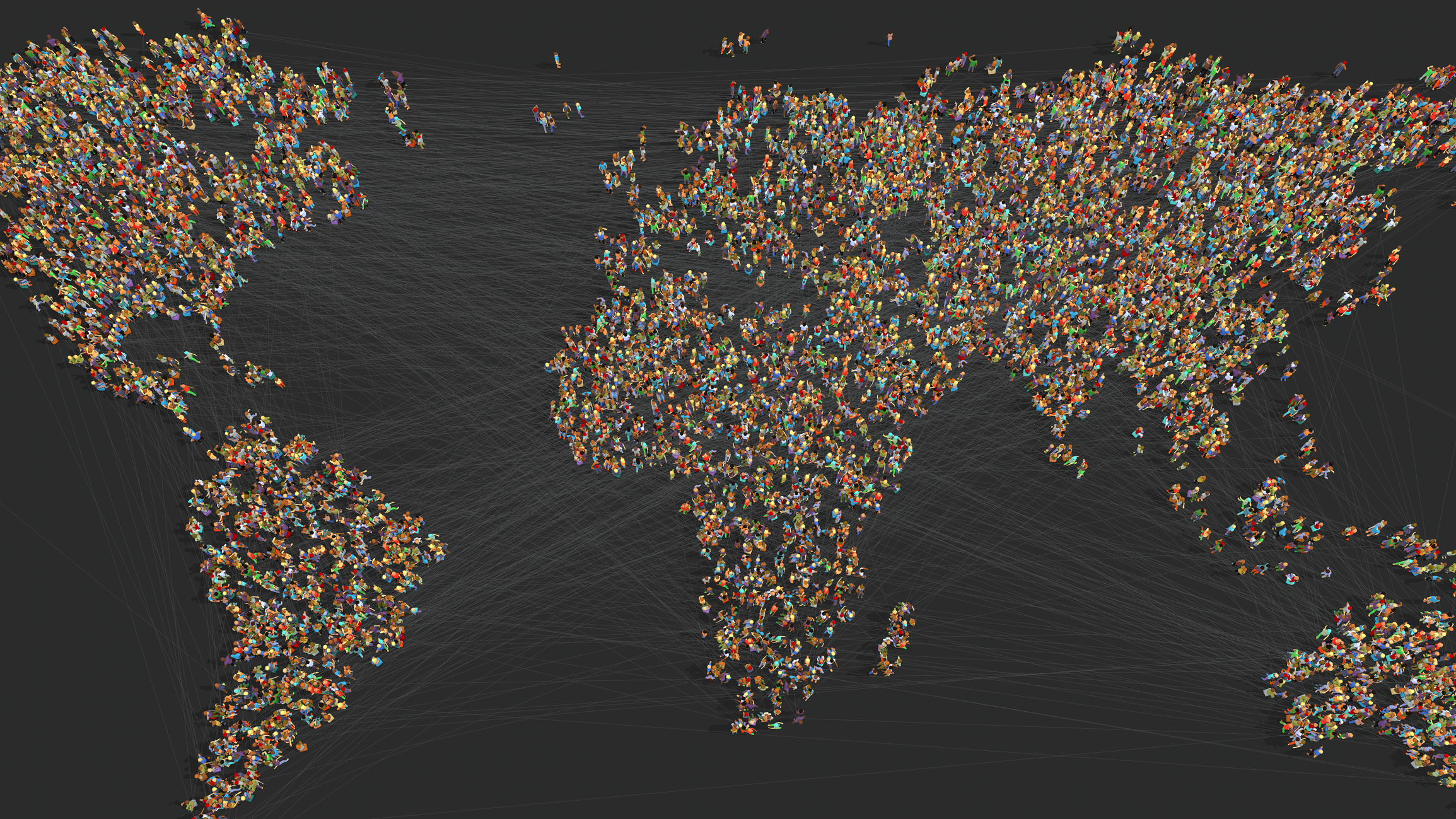World
Map reveals world’s 10 fastest growing populations

Our global population continues to rise, hitting 8 billion in November 2022. However, the increase has been very uneven across the globe, with some countries showing explosive population growth while others have seen significant declines.
“Most countries with high rates of population growth…share a combination of young population structure (that also means many women are in their reproductive ages) and high fertility rates (i.e., high number of children per woman),” Tomas Sobotka, a senior researcher at the Wittgenstein Center for Demography and Global Human Capital and deputy director of the Vienna Institute of Demography, told Newsweek.
“Although fertility rates have been declining everywhere, countries with young population structure will continue experiencing high population growth in many decades to come,” he said.
A country’s overall growth rate is calculated by its birthrate compared to deaths, as well as its net immigration, and can be positive or negative.
As part of the United States government’s World Factbook, the Central Intelligence Agency (CIA) publishes up-to-date figures on population growth rates for 236 countries and territories around the world, which can be visualized in the map below.
The top 10 countries in the CIA’s list for population growth are as follows:
- South Sudan—4.65 percent growth rate
- Niger—3.66 percent
- Angola—3.33 percent
- Benin—3.29 percent
- Equatorial Guinea—3.23 percent
- Uganda—3.18 percent
- Democratic Republic of the Congo—3.11 percent
- Chad—3.01 percent
- Mali—2.9 percent
- Zambia—2.83 percent
The United States, by comparison, is number 131 on the list, with a population growth rate of 0.67 percent.
Sobotka pointed out that several of the top 10 countries are in or near zones of conflict.
“In the CIA table, South Sudan shows the highest population growth because it is estimated to get some of the migrants fleeing Sudan during the ongoing hostilities/civil war there,” he said.
Some of the table’s results are counterintuitive, such as the fact that war-torn Ukraine is positioned as the fastest-growing country outside of Africa.
“Ukraine is expected to have its population growing despite the conflict because some of the refugees are coming back (and leave the countries where they stayed—that’s why, for instance, Poland is projected to shrink by 1 percent),” Sobotka said.
However, he added that the war has also accelerated prewar trends of low fertility and out-migration in the country. “The situation is quite unprecedented,” he said.
Going forward, another looming variable promises to shake up the structure of the global population.
“Over time, climate change will also increasingly contribute to both more conflict and more migration,” Sobotka said. “But these movements are super difficult to predict.”
While our growing population is a clear indicator of the success of public health measures around the world, it also poses a challenge to sustainability and social and economic growth, the extent of which varies on a number of factors, including the country’s political and economic conditions, population density and economic growth.
“Overall, high rates of population growth are often challenging because they increase the pressure on available resources (especially water, land availability, food production and energy) and make it more difficult for the governments to improve infrastructure, improve health care, build better cities, build more schools, expand education system and protect available resources,” Sobotka said.
“However, these challenges can be partly overcome by sound policymaking in countries that have competent governments. Eventually, better education, improved access to health and contraception, urbanization and economic growth will reduce fertility rates, and this will subsequently lead to lower population growth.”
Do you have a tip on a science story that Newsweek should be covering? Do you have a question about population growth? Let us know via science@newsweek.com.









:quality(70):focal(958x822:968x832)/cloudfront-us-east-1.images.arcpublishing.com/shawmedia/JAEFIIKPTVFAPKJ55WWVVO7HAY.jpg)
